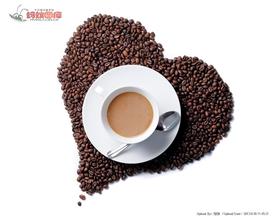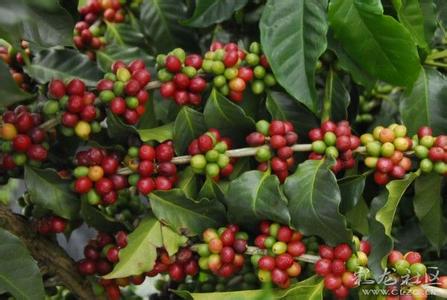Description of taste and flavor of brewed wet-fragrant Yega coffee beans growing environment and regional treatment
Description of Taste and Flavor of Yejia Coffee beans A brief introduction to the Regional treatment method of planting Environment
[special point]: the coffee tree originated in Ethiopia, which was originally a wild plant here. The name "coffee" comes from the Ethiopian town "Kaffa". In fact, many coffee trees in Ethiopia are still wild plants, and the coffee grown on this coffee tree is full-grained and slightly alcoholic.
Light-baked Yirgacheffe, roast over low heat for 15 minutes, turn off the heat and glide for half a minute, then cool the beans and blow off the silver skin. The coffee beans are roasted evenly (because the raw beans are washed and clean) and brown. When using hand coffee grinding, it feels good, smooth and moderate resistance. The dry aroma of coffee powder was a little earthy at first, and then there was a strong, introverted aroma. After brewing, the wet fragrance has obvious orange fruit aroma, and some sour and sweet taste similar to Hawthorn and fruit peel. On the mouth, the taste is a little thin and balanced, with a faint and mild sour taste, rich in oil and long-lasting foam.
Bake the medium-deep baked Yirgacheffe over low heat for 17 minutes, turn off the heat and glide for half a minute, then cool the beans and blow off the silver skin. there is a slight oil on the surface of the coffee beans and the beans are black and brown. Beans are very light, the resistance when using hand coffee grinding is very small, and it is not easy to drop beans. The dry aroma of coffee powder has a strong scorched fragrance and a faint smell of African soil. After brewing, the wet fragrance has a good burnt fragrance, and after deep baking, it seems to have completely lost the regional characteristics of the orange flavor. But after the coffee is sipped, it is full-bodied, fragrant and varied, the gentle sour, bitter and astringent are all well reflected, the texture is thick, the viscosity is better than shallow baking, and the finish is long.

Important Notice :
前街咖啡 FrontStreet Coffee has moved to new addredd:
FrontStreet Coffee Address: 315,Donghua East Road,GuangZhou
Tel:020 38364473
- Prev

A brief introduction to the description of Manor Flavor in Nicaragua Coffee Bean production area
Nicaragua is an economically backward agricultural country, is one of the poorest countries in Central America, the unemployment rate is very high, people live in poverty, and coffee is Nicaragua's pillar industry, producing nearly 100,000 tons of coffee beans every year. Due to the poor economic foundation, the coffee industry is still relatively backward, and coffee farmers are also in a relatively poor state. Although Nicaragua is a large part of Central America,
- Next

Flavor characteristics of Costa Rican Tarazhu Coffee A brief introduction to the production area of texture Grinding scale
The flavor characteristics of Costa Rican Tarazhu coffee taste grinding scale production area introduction to the use of water washing, its style is bright, full of aroma, clear as wind chimes swaying in the breeze, mild acidity and good sweetness. Because of the sweetness, even if the coffee gets cold, it tastes very good, which is a major feature of Costa Rican coffee. The Goddess Manor grows coffee organically.
Related
- Detailed explanation of Jadeite planting Land in Panamanian Jadeite Manor introduction to the grading system of Jadeite competitive bidding, Red bid, Green bid and Rose Summer
- Story of Coffee planting in Brenka region of Costa Rica Stonehenge Manor anaerobic heavy honey treatment of flavor mouth
- What's on the barrel of Blue Mountain Coffee beans?
- Can American coffee also pull flowers? How to use hot American style to pull out a good-looking pattern?
- Can you make a cold extract with coffee beans? What is the right proportion for cold-extracted coffee formula?
- Indonesian PWN Gold Mandrine Coffee Origin Features Flavor How to Chong? Mandolin coffee is American.
- A brief introduction to the flavor characteristics of Brazilian yellow bourbon coffee beans
- What is the effect of different water quality on the flavor of cold-extracted coffee? What kind of water is best for brewing coffee?
- Why do you think of Rose Summer whenever you mention Panamanian coffee?
- Introduction to the characteristics of authentic blue mountain coffee bean producing areas? What is the CIB Coffee Authority in Jamaica?

